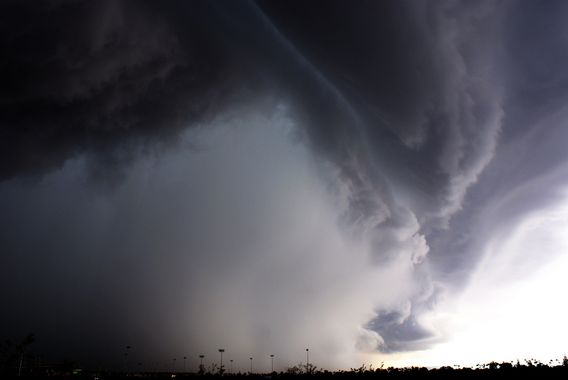2018 was one of the least active years on record for US tornadoes

In a year that featured catastrophic hurricanes and historic wildfires, 2018 could close out as one of the quietest and least-deadly years for tornadoes in United States history.
“2018 is running near the minimum in terms of number of tornadoes recorded in modern times,”said Dr. Patrick Marsh, a warning coordination meteorologist at NOAA’s Storm Prediction Center.
As of Dec. 29, there have been 991 tornadoes across the United States in 2018. This is noticeably lower than the average of 1,287 and only slightly higher than the record low of 897 tornadoes, set in 2014.

One reason behind the near-record low tornado count was the absence of significant severe weather outbreaks during the spring when tornadoes typically frequent the central United States.
“The typical big tornado months were uncharacteristically devoid of tornado outbreaks this year. In particular, April and May were relatively quiet in terms of tornado numbers with May having over 100 fewer tornadoes than the three-year average,”Marsh said.
“Oklahoma did not report a tornado until May -- the latest date for a first tornado [in the state] in the NOAA database,”Marsh said.
Another factor that resulted in a dip in tornado numbers this year is the overall storm track.
"The far-cooler air was a result of a persistent Canadian storm track driving chilly Canadian clipper-type systems into the Plains. The ideal storm track is a more westerly-southwesterly storm track that can lift a more subtropical air mass northward from the Gulf of Mexico,"AccuWeather Meteorologist Brett Rossio said.

Not only has 2018 had a lower-than-average number of tornadoes, but there has been an absence of incredibly violent twisters.
Tornadoes are ranked on the Enhanced Fujita Scale, with an EF0 being the weakest and an EF5 being the most intense.
“I am unaware of any tornado in 2018 being rated an EF4,”Marsh said.
This is the first year since records began in 1950 that there has not been a violent F/EF4 tornado anywhere in the U.S.
“We have to be a little careful with this information as tornado ratings for the entire year are not finalized yet and so it is subject to some change. However, it is reasonable to assume that no tornado has achieved a rating of EF4 in 2018,”Marsh added.

In addition to the lower-than-normal tornado activity, 2018 is also poised to finish as the year with the fewest tornado-related fatalities on record.
As of Dec. 28, there have only been 10 tornado-related fatalities across the United States, the lowest number since records began in 1875. The previous record was 12 tornado-related fatalities in 1910.

This is also significantly lower than the 20-year average of 80 tornado-related fatalities per year, according to Texas Tech University.
The ever-expanding use of weather apps and social media has helped to revolutionize the way that people are alerted about tornado warnings in recent years, helping to save lives when a tornado strikes.

While the past year will go in the record books as one of the least active years for tornadoes, 2018 still featured some notable tornadoes across the country.
In July, a catastrophic EF3 tornado struck Marshalltown, Iowa, leaving at least 17 people injured.
On Oct. 28, a tornado touched down in the city limits of Portland, Oregon, the first tornado to do so since April 6, 1972.
Just over one month later, an EF3 tornado struck Taylorville, Illinois, injuring 20 people and damaging over 100 homes. This was one of the strongest tornadoes during a multi-day severe weather outbreak right before the start of meteorological winter.
Washington also had the state’s strongest tornado since 1986 when an EF2 twister touched down in Port Orchard on Dec. 18.

